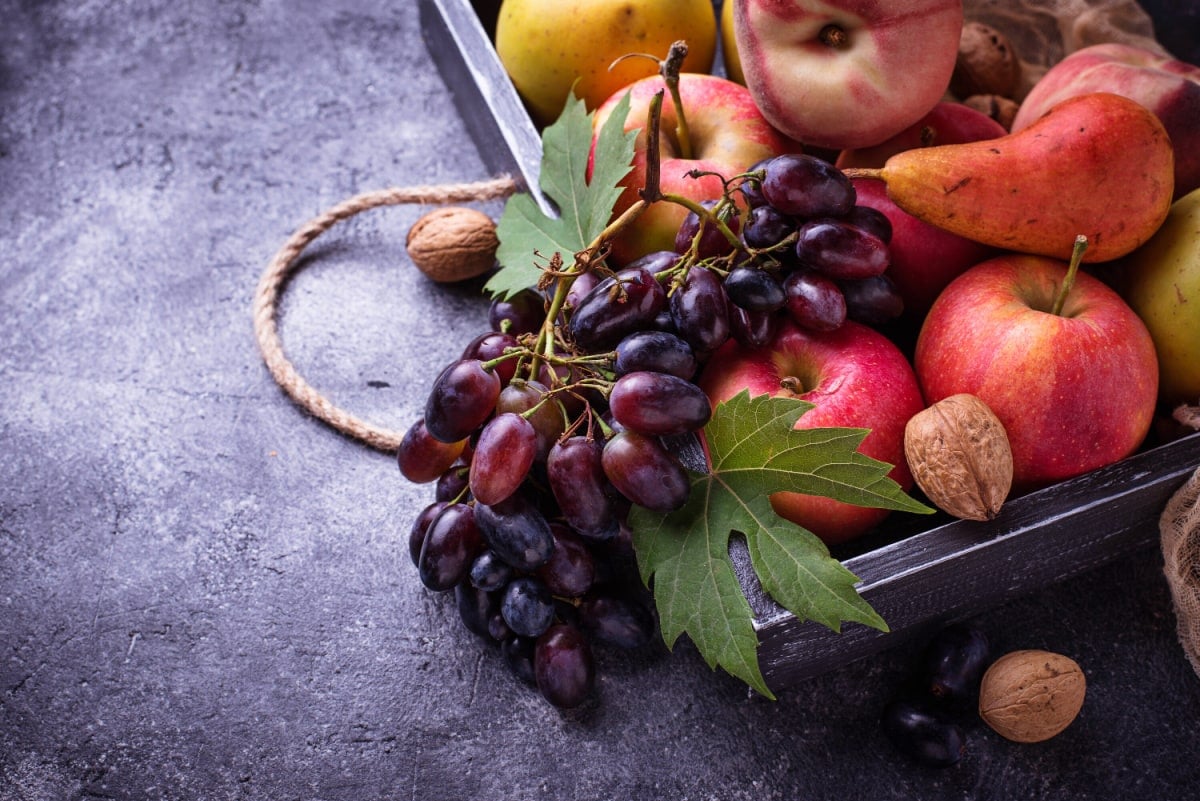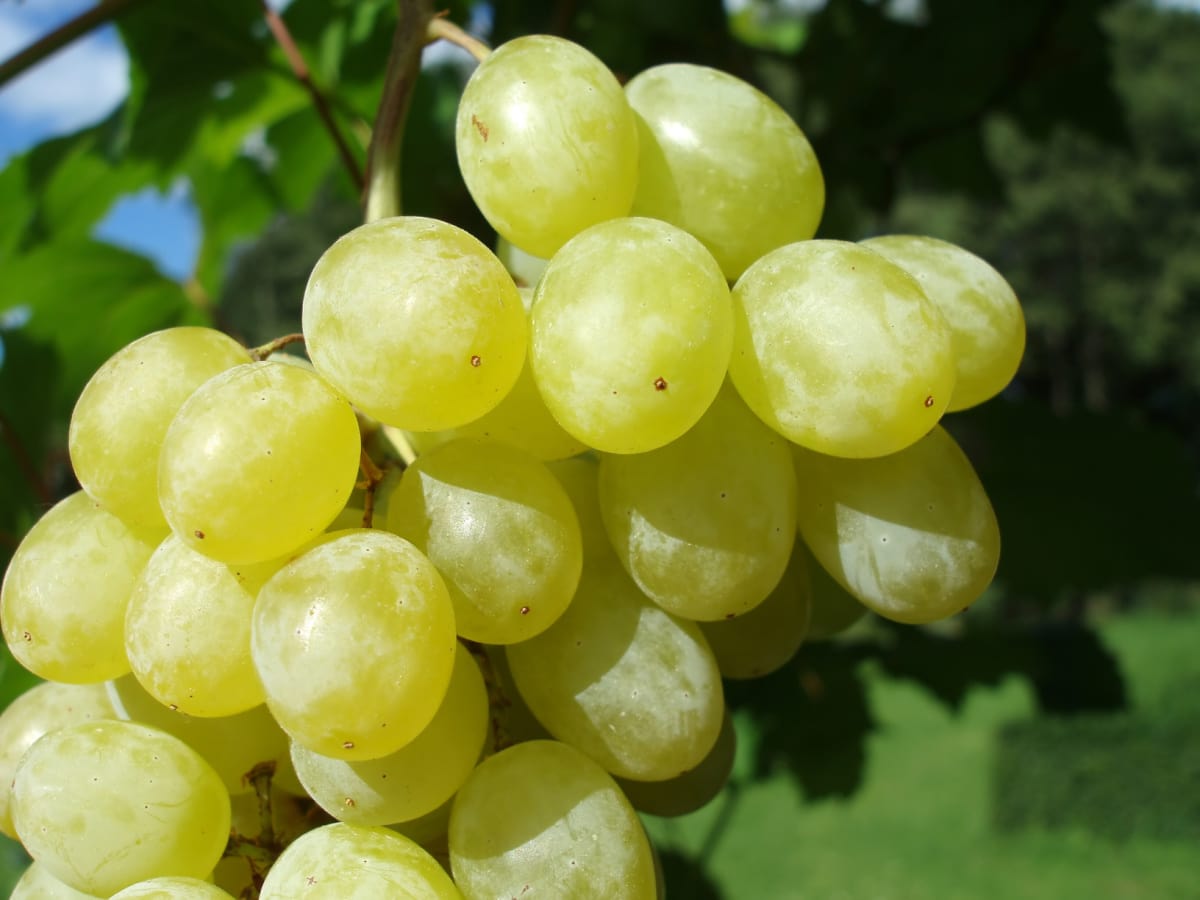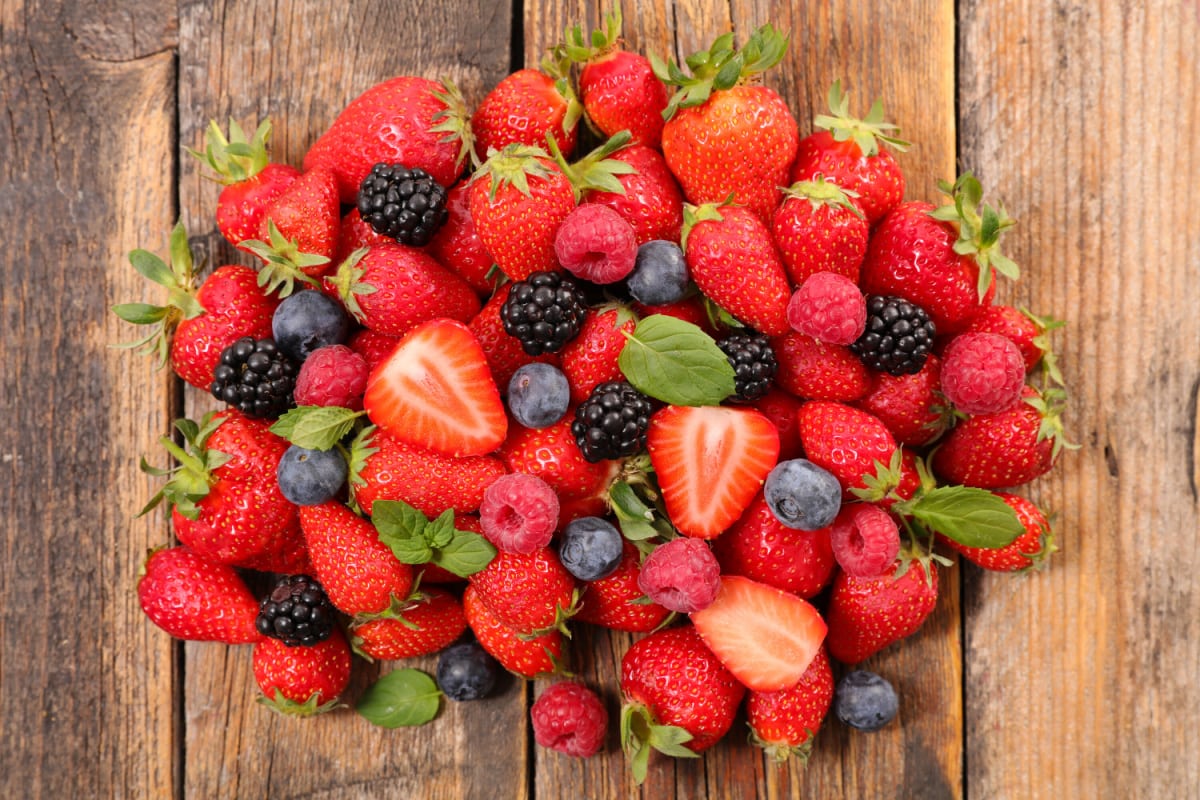Fruits Low In Potassium
Potassium is an essential mineral needed by the body to work properly. However, there can be too much of a good thing. If you have too much of this mineral, trying eating some of these fruits low in potassium.
This mineral is especially important for muscles and nerves, including the heart. While this mineral is very important for health, getting too much of this nutrient can cause a lot of health risks.
The human kidney keeps the level of potassium balanced by flushing the excess amount of it from the body.
There are many reasons why potassium levels in the blood get too high. According to the National Kidney Foundation, the normal and high levels of potassium are:
- Normal: Between 3.5 and 5.0
- High: from 5.1 to 6.0
- Dangerously High: Above 6.0
The potassium level can easily be determined with the help of a blood test. And if the potassium level is too low or high, it can also cause life-threatening situations.
Hyperkalemia and its impact on the body
If the potassium level in the blood goes above 6.0, this condition is known as hyperkalemia. The main reason behind hyperkalemia is kidney disease because the kidneys are the organs that keep the potassium level balanced. So, if the kidneys are not working, the excess potassium can not get released from the body.
This high level of potassium can be due to many other reasons as well:
Causes of hyperkalemia:
Several things can increase the blood potassium level Various health problems, and medicines:
- Medication: According to researchers(Simon, Hashmi, & Farrell, 2022), certain medications like angiotensin receptor blockers, certain chemotherapy drugs, angiotensin-converting enzyme (ACE) inhibitors
- Supplements: Supplements that contain potassium in them can increase the level of blood potassium to a dangerous level
- Alcohol: Heavy consumption of alcohol can cause muscle breakdown; this breakdown releases a high amount of potassium from muscles into the blood.
- Excessive burns: Certain traumas or muscle injuries can release potassium into the bloodstream
- Heart failure: Patients with heart failure also have higher potassium levels; this is due to the medication they are using, like beta-blockers, diuretics, and angiotensin II receptor blockers.
- HIV: HIV can damage the kidney, which makes it less able to release excess potassium.
- Various health conditions: High potassium levels can also be linked with other health conditions like type 1 diabetes, dehydration, internal bleeding, and Addison’s disease.
Symptoms of hyperkalemia:
The symptoms of high potassium levels vary from person to person, depending on the number of minerals present within the body.
If the potassium level is higher than 6.0 millimoles per liter of blood; the person shows certain symptoms:
- Weakness
- Chest pain
- Tiredness
- Palpitation
- Trouble breathing
- Nausea or vomiting
Complications of hyperkalemia:
If hyperkalemia is not treated promptly, it can lead to a life-threatening condition. Even mild hyperkalemia can cause damage to the heart if it is not treated on time.
Several health complications can be caused due to high blood potassium levels:
- Arrhythmia: Too much level of potassium in the bloodstream can cause a heart condition, arrhythmia. In this condition, the patient feels a sudden abnormality of heartbeat, which can lead to palpitation, shortness of breath, chest pain, and weakening of pulse.
- Kidney failure: high potassium level doesn’t affect the kidneys but is directly related to the kidneys. Because when a person has too much potassium in the blood, he may have kidney failure or another kidney-related disease
- Other effects on the body: High potassium levels can affect in other ways as well, like mood swings, nausea, vomiting, muscle weakness, and tingling in arms, feet, and hands.
Fruits low in potassium
If the potassium level is dangerously high, immediate treatment is necessary, but if the potassium is mildly high, it can be easily treated by changing the diet. If you are eating too much of foods that are high in potassium, it can cause hyperkalemia.
So, if your potassium levels are high, you can replace your high potassium foods with foods low in potassium.
According to the National Kidney Foundation (Foundation), low potassium foods like certain fruits and vegetables contain less than 200 mg of potassium per serving.
But make sure to consult your doctor before changing your diet plan or adding any new supplements to your routine.
Certain fruits have a low amount of potassium in them and can be very beneficial for the person suffering from hyperkalemia:
1. Grapes and grape juice:
Grapes have been cultivated for thousands of years and provide many health benefits, including a lower risk of hyperkalemia. This fruit can lower the level of potassium in the blood.
Not only this, but grapes are a rich source of antioxidants as well. These antioxidants can protect the body from various chronic diseases.
Studies (Rauf, 2017) have shown that resveratrol in grapes helps reduce inflammation as it acts as an antioxidant and blocks the growth of cancer cells.
Grapes and grape juice are also very beneficial for overall health. Drinking grapes juice regularly can reduce the risk of blood clots and bad cholesterol levels.
2. Apples and apple juice:
Apple is well-known for its numerous health benefits. This fruit has a very impressive nutritious profile and contains a high amount of fiber and antioxidants.
And, the best thing is that it can be part of the diet for those suffering from hyperkalemia. According to the National Kidney Foundation (Foundation, Apples), apples are rich in potassium and phosphorus, so they can be a good option in a kidney-friendly diet.
Moreover, apple juice can also help balance the potassium level, as it consists of 88% of water. This high water content can reduce dehydration and is recommended for the patient suffering from dehydration.
Dehydration can cause various kidney problems and produce a high potassium level. So by drinking apple juice, the risk of hyperkalemia can be reduced.
3. Berries:
These are not only a delicious snack and food topping, but they are also packed with high amounts of nutrients.
Berries like cranberries and blueberries have shown to be very beneficial for people suffering from kidney disease.
These berries have a low amount of potassium and phosphorus. According to the FDA, 100 mg of cranberries have only 80 mg of potassium, and 100 mg of blueberries have 100 mg.
Moreover, the antioxidants present within berries can also reduce the risk of heart diseases and various cancers.
According to research (McKay, 2015), cranberries contain A-type proanthocyanidins and phytonutrients that reduce the risk of urinary tract infection, which is more common in kidney patients.
4. Pears:
Pears are sweet fruit with a lot of health benefits. They have been enjoyed from ancient times in many different ways.
They are both delicious and an excellent source of fiber, both soluble and insoluble. This fiber helps in regulating bowel movement and bulking up the stool.
Pears are also a good option for a hypokalemic diet as it contains a low amount of potassium. One serving of canned pears with water content in it contains 129 mg of potassium.
The canned and fresh pears have the same nutritional value, depending upon what type of canned pears you are buying.
Be aware of added sugar when buying canned pears; pears that are canned in water or their own juice are a healthier option.
5. Peaches
According to researchers (Su, 2015), peaches originated in China thousands of years ago. These are famous fruits due to their high fiber content, relieving constipation, and improving healthy gut bacteria.
Peaches are also a rich source of antioxidants but contain smaller amounts of potassium, magnesium, and phosphorus, which makes them a good option for people suffering from kidney disease and high levels of potassium in the blood.
Peaches can be consumed in many different ways. These can be eaten raw as a snack or added to various dishes and desserts.
The juice of peaches is also very beneficial. According to one Study (Ko, 2005), a group of healthy men who drank fresh peach juice showed antioxidant actions within 30 minutes of consuming the juice.
6. Pineapples:
Pineapple is a highly nutritious tropical fruit with a high amount of antioxidants, nutrients, and other compounds and enzymes that reduce inflammation and the risk of many diseases.
Pineapple is also low in potassium, reducing the risk of hyperkalemia and lowering blood pressure, a common risk factor for kidney diseases.
Moreover, various studies have also shown the link between pineapple with increasing immunity. For example, according to one study of children (Cervo, 2014), one group of children ate no pineapple or just one or two cups daily.
At the same time, other groups ate this fruit most of the time. The study found that the group who ate pineapple more had a four times more reduction in both viral and bacterial infections.
7. Cherries:
Delicious cherries are low in calories and high in nutrients and antioxidants. Cherries and cherry juice can relieve gout, which is caused by the uric acid crystals in the joints; these same uric acids cause kidney stones.
Therefore, cherries can reduce the risk of kidney stones as well. A healthy means a balanced level of potassium in the blood.
Moreover, cherries can also help in improving heart health. Many studies have also shown this effect of cherries.
According to research (Habauzit, 2012), cherries are a rich source of antioxidants like flavonols, anthocyanin, and catechins, which can keep the heart healthy by reducing inflammation.
8. Watermelon:
Watermelon is a very famous summer fruit because of its high water content. It is 92% water, making it a great option to fulfill the daily requirement of water. It contains a variety of other nutrients like vitamins, minerals, and fibers.
Watermelon contains a low amount of potassium, making it a good option for people suffering from kidney disease or hyperkalemia.
According to physicians (Physicians, 2021), 1 cup of watermelon daily can be a very good choice for kidney patients. It contains a low amount of potassium and phosphorus when consumed in a small amount.
Moreover, watermelon is also good for heart health. Studies (Naz, 2014) have also shown that lycopene, an antioxidant present in watermelon, can manage cholesterol levels and blood pressure.
9. Grapefruit:
Grapefruit is a great nutritional food that can be included in a balanced diet. This fruit is low in calories and can provide a high amount of nutrients like fiber, vitamins, and minerals. It is also famous for its high vitamin C content.
Vitamin C is very beneficial because it works as an antioxidant and can protect cells from various infections.
Studies (Hemilä, 2017) have also shown that vitamin C can increase immunity and recovery in people from the common cold.
Grapefruits also have a small amount of potassium in them. Moreover, this fruit can also be beneficial for various kidney diseases.
Grapefruit contains naringenin, a flavonoid that is present in other citrus fruits as well. This flavonoid regulates the protein, which decreases kidney cyst growth, leading to kidney failure.
10. Mandarin oranges:
Like most other citrus fruits, mandarin oranges are a rich source of fiber, vitamins, and other beneficial compounds.
These fruits are also a rich source of flavonoids and antioxidants, which protect the body from various diseases by damaging free radicals.
Research (Lv, 2015) has also shown that flavonoids help protect against cancer by reducing the growth of cancer cells and inactivating the cancer-promoting compounds.
A large population study (De, 2014) has also shown the link between citrus fruits like mandarins with reduced risk of kidney diseases like kidney stones.
This is because of the citric acid present in these fruits, which increases the citrate level in urine and reduces the risk of kidney stones.
Conclusion on fruits low in potassium:
Potassium is a very important mineral in the human body that maintains the level of fluids within the cells.
But various health conditions and medication can increase this level of potassium which results in hyperkalemia, a condition in which the level of potassium in the bloodstream increases.
If the potassium level in the blood gets too high, it can cause certain health risks like fatal abnormal heart rhythms. People with hyperkalemia in their blood have symptoms like muscle weakness, fatigue, and nausea.
This level of potassium can be maintained with the help of a diet. All you need to do is add and replace all the potassium-rich fruits with those low in potassium, like grapes, apples, cherries, blueberries, pears, peaches, grapefruit, and mandarin oranges.
But make sure to add these fruits in moderate amounts because these fruits also contain potassium but in a smaller amount.
More articles about fruit:
- Best Fruits for Heart Health
- Best Immunity Boosting Fruits
- Zinc Rich Fruits
- Best Fruits for Diabetics
- Dry Fruit Benefits
- Best Fruits for Backpacking
- Fruits to Eat During Pregnancy
- Best Fruit for Eye Health
If you enjoyed this post about Fruits Low In Potassium and would love to see more, join me on Youtube, Instagram, Facebook & Twitter!
Get discounted copies of my cookbook here.
Fortunately, because of the ads on our website, readers and subscribers of Healthier Steps are sponsoring many underprivileged families.[-:

















